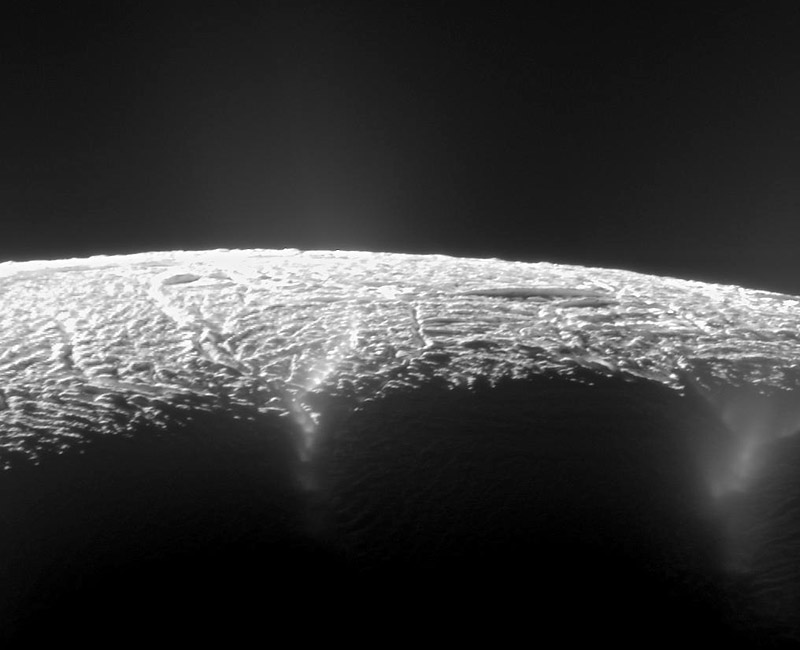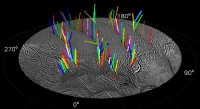This view looks across the geyser basin of Saturn’s moon Enceladus, along fractures spewing water vapor and ice particles into space. Cassini scientists have pinpointed the source locations of about 100 geysers and gained new insights into what powers them. (NASA/JPL-Caltech/SSI)
Home This view looks across the geyser basin of Saturn’s moon Enceladus, along fractures spewing water vapor and ice particles into space. Cassini scientists have pinpointed the source locations of about 100 geysers and gained new insights into what powers them. (NASA/JPL-Caltech/SSI) This view looks across the geyser basin of Saturn's moon Enceladus, along fractures spewing water vapor and ice particles into space. Cassini scientists have pinpointed the source locations of about 100 geysers and gained new insights into what powers them. (NASA/JPL-Caltech/SSI)



